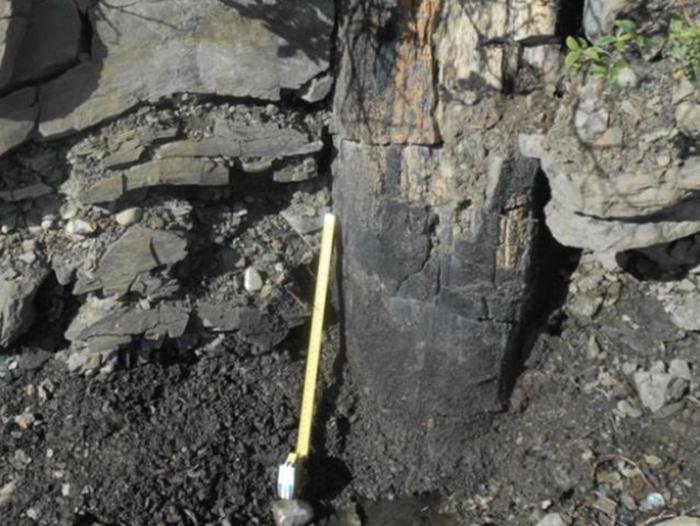A significant discovery in far northwestern Alaska has unveiled a trove of dinosaur tracks, fossilized plants, and tree stumps, providing new information about the climate and movements of ancient animals approximately 100 million years ago.

Their research, focused on the Nanushuk Formation, an outcropped layer of sedimentary rock dating back to the mid-Cretaceous Period, provided insights into the environmental conditions of that era, particularly as it relates to the formation of the Bering Land Bridge connecting Asia and North America.
McCarthy said: “The mid-Cretaceous was the hottest point in the Cretaceous.” By examining the fossilized remains, including approximately 75 dinosaur tracks found in the Coke Basin area along the Kukpowruk River, the team pieced together a snapshot of life in a warmer Earth.
The Nanushuk Formation, ranging from 94 to 113 million years old, offered a glimpse into a high-latitude ecosystem during a time of elevated global temperatures. Fiorillo remarked on the abundance of dinosaur footprints in the area, providing a vivid picture of an ancient landscape.
Of particular interest were the relative frequencies of different dinosaur species, with bipedal herbivores dominating the track record at 59%. Fiorillo noted the presence of fossil bird tracks, suggesting a similarity in warm paleoclimate conditions to those observed today in the Arctic, where nearly half of North America’s shorebirds breed during the summer months.

Carbon isotope analysis of wood samples indicated a high precipitation rate, estimated at about 70 inches annually, during the mid-Cretaceous Period. This finding aligns with global precipitation patterns associated with the Cretaceous Thermal Maximum, a period approximately 90 million years ago characterized by significantly higher temperatures than today.

McCarthy’s expertise in fossil soils helped interpret the ancient environment, revealing details such as river channels, flood deposits, and swampy areas. The research also underscored the site’s location, which was 10 to 15 degrees latitude farther north during the mid-Cretaceous than today.
Fiorillo emphasized the significance of the discovery in expanding our understanding of life in high latitudes during the time of dinosaurs, stating, “This puts a new dot on the map and tells us there’s a lot here, and it fits into the bigger picture.”




































